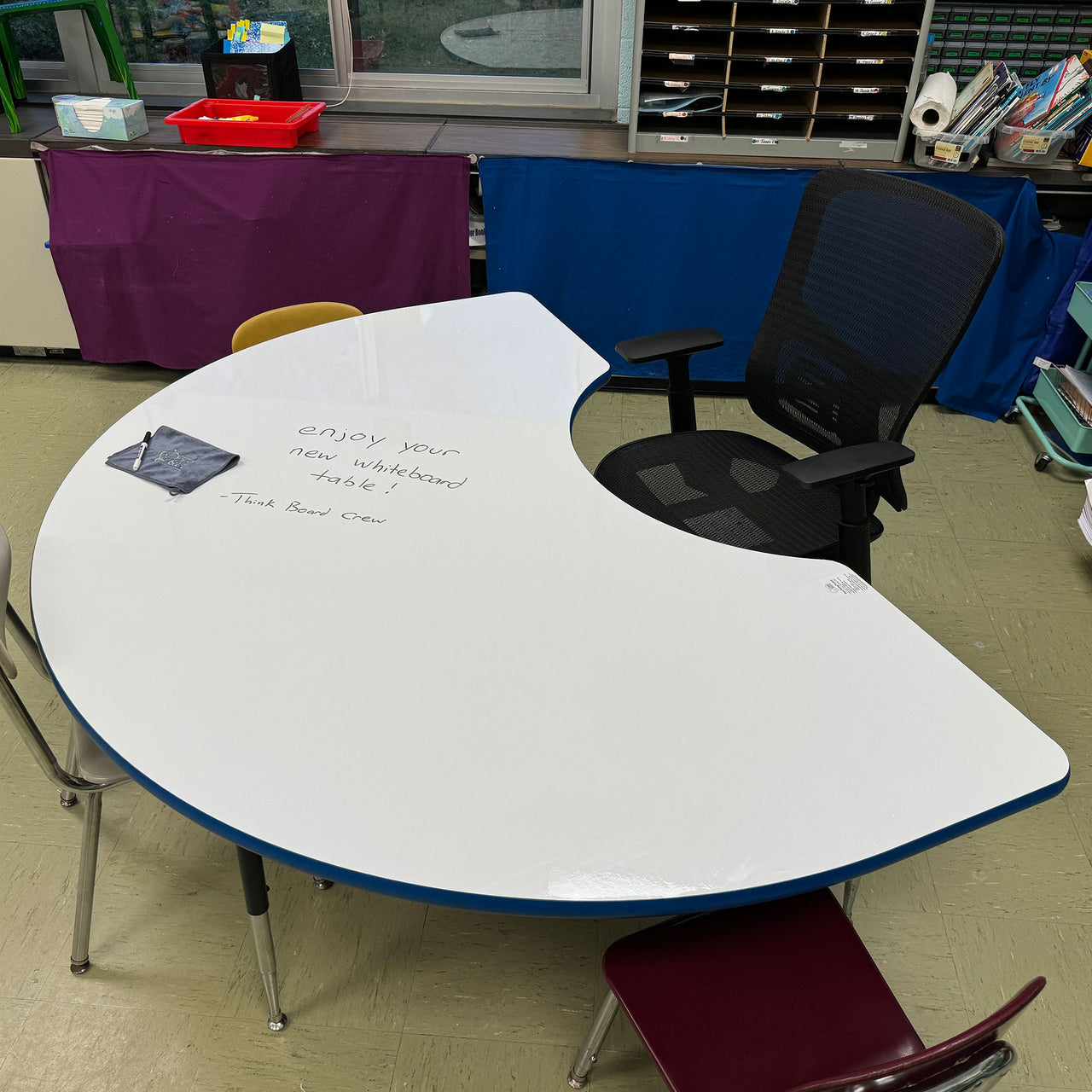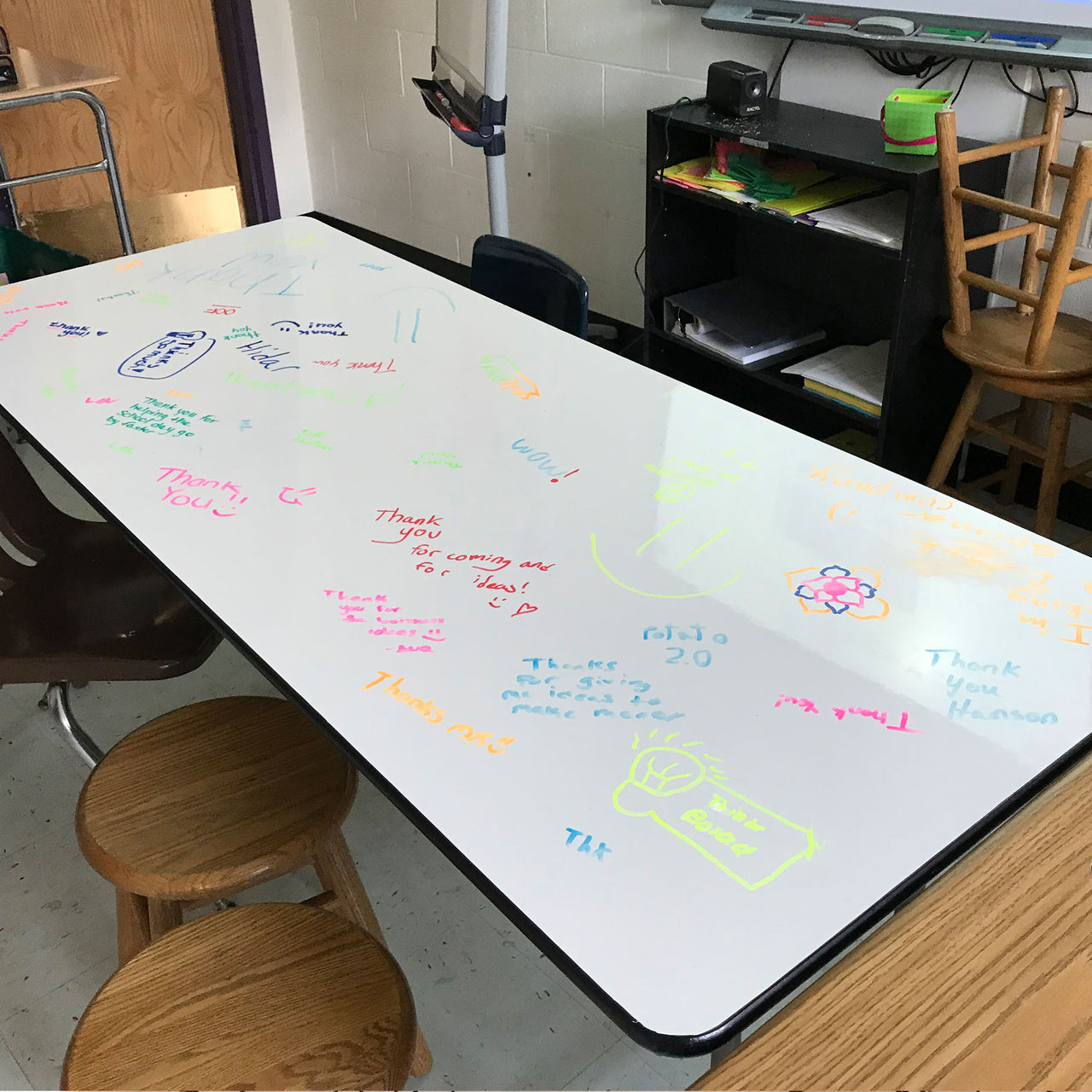How to Boost Student Engagement with Color & Surface Design
When it comes to classroom design, creating an environment that promotes engagement and fosters productivity is essential. Classroom designers often find themselves balancing aesthetics with functionality, aiming to create spaces that both inspire students and support effective learning.
One of the most powerful tools in achieving this balance is the use of color and surface design. Studies have shown that colors can have a significant impact on mood, focus, and even memory retention, while surface types—such as writable surfaces—offer interactive and collaborative opportunities that enhance student engagement.

The Psychology of Color in the Classroom
Color psychology plays a key role in creating a positive learning environment. Different colors evoke different emotions and can influence students' behavior and cognitive functions. Classroom designers often incorporate these principles when selecting wall colors, furniture, and accessories to ensure the space is conducive to learning.
- Blue: Often associated with calm and focus, blue is a great choice for areas where students need to concentrate. Light blues promote tranquility, while darker blues can aid in fostering a sense of focus and productivity. For areas such as reading corners or individual desks, incorporating blue tones can encourage concentration.
- Yellow: A color linked to creativity and energy, yellow can stimulate excitement and optimism. It’s ideal for spaces where students will brainstorm, collaborate, and share ideas. Yellow accents can help create an energizing atmosphere, but it’s best used in moderation as it can be overwhelming if overdone.
- Green: Green is known to have a soothing effect, promoting relaxation and stress relief. This color works well in classrooms where students need to feel at ease, like quiet zones or spaces designated for reflection or group work. It's also linked to nature, which can help reduce mental fatigue and increase students’ ability to focus.
- Red: While red can stimulate energy and attention, it can also raise anxiety levels. It's best used in moderation—perhaps as an accent color in collaborative spaces or for highlighting important elements, such as problem-solving boards or a focused display area.
When choosing colors for a classroom, consider both the psychological effects and how the space will be used. Combining calming colors like blue and green with energizing shades like yellow can help create a balanced, stimulating environment.

The Role of Writable Surfaces in Engagement
Writable surfaces, like whiteboards, add a functional element to the classroom that traditional surfaces lack. These surfaces invite active participation, allowing students to brainstorm, take notes, or solve problems as a group. Writable walls and tables can encourage creativity, foster collaboration, and help students process information more effectively.
Think Board’s clear whiteboard films are a great way to add writable surfaces without disrupting the existing color scheme of a classroom. These films can be applied to any colored wall or wooden table, turning ordinary surfaces into functional, interactive whiteboards. With clear whiteboard films, educators and designers can preserve the aesthetic choices of the space—whether it's vibrant wall colors or natural wood finishes—while providing a versatile, easy-to-clean writing surface. This allows for maximum design flexibility, as clear films won’t clash with or alter the room’s color palette.

Balancing Aesthetics and Functionality
Classroom designers often have to walk a fine line between creating visually engaging spaces and ensuring those spaces are functional. Striking the right balance between aesthetics and functionality is key to a well-designed classroom that supports both student well-being and academic performance.
By integrating the right color scheme with Think Board’s flexible whiteboard films, you can enhance both the mood and functionality of the room. For example, using a calming base color like green on the walls while adding a clear whiteboard film to a table or door can create a peaceful yet productive environment. The clear surface can also allow the natural colors of the room to shine through, providing an aesthetically pleasing and dynamic workspace.
Tips for Using Color and Writable Surfaces Effectively
- Incorporate Multiple Zones: Create distinct learning zones by using color to define areas for different activities. For example, use calming blues and greens in study areas and energizing yellows in collaboration spaces. This helps guide students’ focus and behavior while offering variety in the classroom.
- Use Writable Surfaces in High-Interaction Areas: Writable surfaces like tables, walls, and doors encourage group work, creativity, and problem-solving. Position these surfaces in areas where students can engage with the material or collaborate as a group. Think Board’s clear whiteboard film can be applied to existing surfaces, adding functionality without compromising the design.
- Keep It Simple: A cluttered or overly bright room can cause distractions. Aim for a balanced color scheme that promotes both focus and creativity. Avoid using too many bright colors in one area—opt for accents and highlights rather than overwhelming the space.
- Match Surface Types to Activities: Use different surface types to match the intended activities. Writable tables or desks are great for individual work, while walls can be used for group brainstorming sessions. Think Board’s products offer the flexibility to create customized spaces for any classroom setup.

Conclusion
Designing a classroom that fosters engagement, creativity, and productivity requires thoughtful consideration of both color and surface design. By using color psychology and integrating writable surfaces like Think Board’s clear whiteboard films, educators and designers can create spaces that support active learning while remaining visually appealing.
Whether resurfacing an old table or adding a writable wall, Think Board's products help bring functionality to any classroom without compromising on aesthetic appeal. Embrace the power of color and design, and transform your classroom into an inspiring space where students can thrive.








